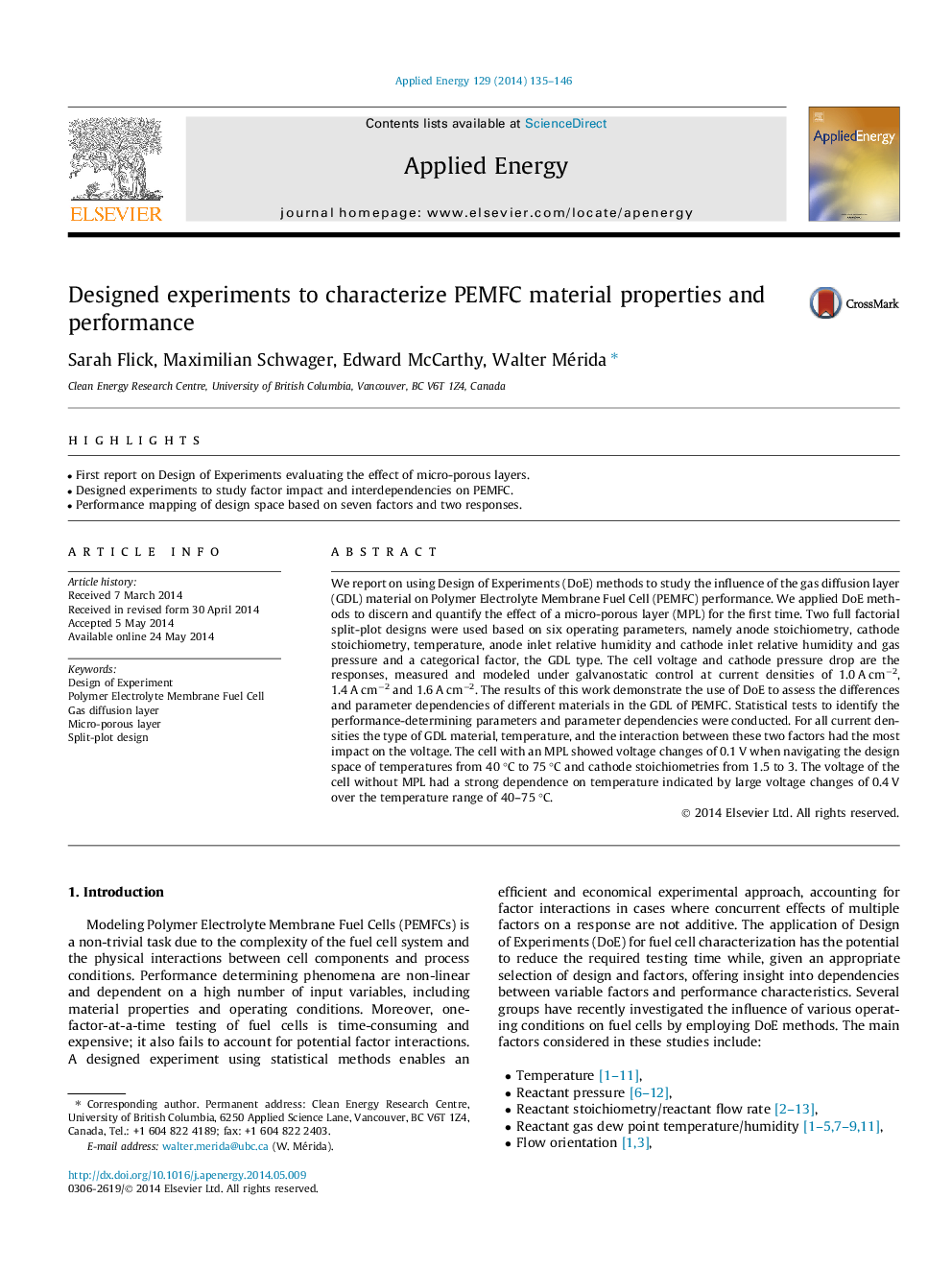| Article ID | Journal | Published Year | Pages | File Type |
|---|---|---|---|---|
| 242706 | Applied Energy | 2014 | 12 Pages |
•First report on Design of Experiments evaluating the effect of micro-porous layers.•Designed experiments to study factor impact and interdependencies on PEMFC.•Performance mapping of design space based on seven factors and two responses.
We report on using Design of Experiments (DoE) methods to study the influence of the gas diffusion layer (GDL) material on Polymer Electrolyte Membrane Fuel Cell (PEMFC) performance. We applied DoE methods to discern and quantify the effect of a micro-porous layer (MPL) for the first time. Two full factorial split-plot designs were used based on six operating parameters, namely anode stoichiometry, cathode stoichiometry, temperature, anode inlet relative humidity and cathode inlet relative humidity and gas pressure and a categorical factor, the GDL type. The cell voltage and cathode pressure drop are the responses, measured and modeled under galvanostatic control at current densities of 1.0 A cm−2, 1.4 A cm−2 and 1.6 A cm−2. The results of this work demonstrate the use of DoE to assess the differences and parameter dependencies of different materials in the GDL of PEMFC. Statistical tests to identify the performance-determining parameters and parameter dependencies were conducted. For all current densities the type of GDL material, temperature, and the interaction between these two factors had the most impact on the voltage. The cell with an MPL showed voltage changes of 0.1 V when navigating the design space of temperatures from 40 °C to 75 °C and cathode stoichiometries from 1.5 to 3. The voltage of the cell without MPL had a strong dependence on temperature indicated by large voltage changes of 0.4 V over the temperature range of 40–75 °C.
